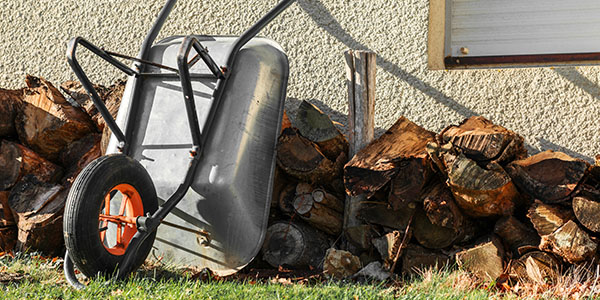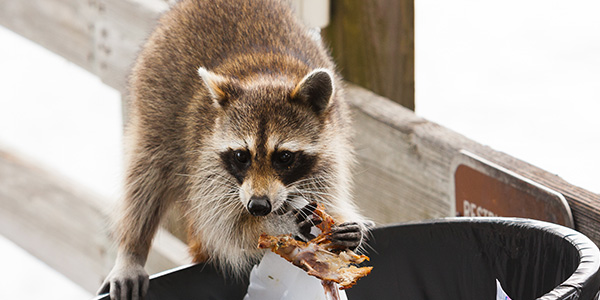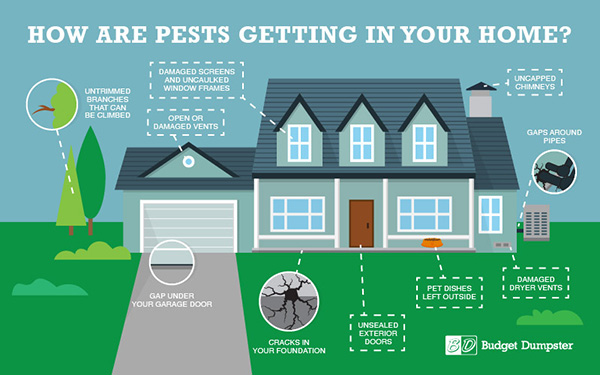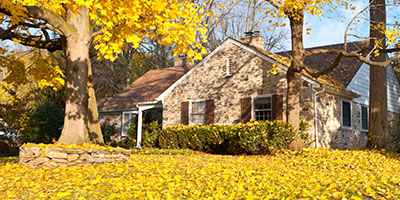7 Pest Prevention Tips for Your Home

DIY Pest Control Tips for Your Home
Nuisance animals in your home can be much more than just an annoyance. Animal droppings create an environment that’s ripe for mold, which can put your health at risk. Worse yet, animals can chew through electrical wires and water pipes, which could cause a fire or significant water damage. If unwelcome visitors go undetected, these problems can get much worse, so it’s important to make sure your home is pest-proofed.

How Do I Know if I Have Animals in My Home?
The easiest way to detect animals is by sounds they’re making. If you hear scratching or tapping in your walls or attic, there’s a good chance you have a rodent sharing your home. If you discover rodent droppings anywhere in your home, you definitely have a house guest. Check your food storage areas regularly for signs of mice, since the kitchen is the most common area for them to live. If you suspect you have nuisance animals, take steps to remove them and keep them out of your home in the future.
How Do You Keep Wild Animals Away From Your House and Yard?
While you should call a professional to remove rodents, bugs or any other wild animals from around the house, there are several ways you can pest-proof your home. Take preventative measures with these DIY pest control tips.

1. Tidy Up Your Yard
The easiest way to keep wild animals away from your house is to limit the places they can hide. Mice, chipmunks and other small rodents need to keep away from predatory birds, so they seek out safe places like bushes or piles of fallen branches. Disposing of yard waste on your property will force animals to look for other places to hide. If you store firewood outside, animals can hide or live underneath it. Keep your firewood away from the house so potential animal squatters don’t make their way inside.
2. Remove Sources of Food and Water
If you have an outdoor pet, don’t leave food and water dishes outside unattended. This will invite nuisance animals right to your doorstep. You also have to address natural sources of food and water. If you tend to get standing water in your yard, now is the time to improve your yard’s drainage so animals don’t stop for a drink close to your home. Keep in mind that rodents like birdseed as much as the birds do, so consider moving your birdfeeder away from the house, or get rid of it completely.
3. Find and Fix Cracks in Your Foundation
If you have a basement or crawlspace, animals can often find their way inside through cracks in the foundation, vents or around AC pipes. It doesn’t take much for nuisance animals to get in either - mice and small rodents can fit through a hole the size of a quarter. Inspect your foundation thoroughly, especially where different building materials meet, to look for any gaps. Fill in any spaces you find with expanding foam. Keep an eye out for problems with your foundation, which can open up entry points for small animals in addition to the need for expensive repairs.
4. Seal Up Your Attic
How do animals get in the attic? If there is a small hole somewhere in your roof, a persistent animal looking for a warm place to live will probably find it. Inspect the outside of your roof looking for any hole or gap, especially around vents and in corners, windows or chimneys. If you can get into your attic, look around the inside as well so you don’t miss any entry point. If you clean and organize your attic, it will be easier to see signs of animal habitation. Squirrels and other climbing animals often get to your roof by jumping down from nearby trees. Keep them off your house by cutting branches back far enough to keep them at bay.

Force Animals Out, Don’t Seal Them In
There might already be nuisance animals hiding in your home when you’re inspecting and sealing. Look around in your crawl space or attic for signs of animals, such as chew marks on wood, pipes or electrical wires. Keep an eye out for droppings, nests or disturbed insulation. If you see any of this evidence, you should take steps to get the animals out before you seal all the holes. You can live-trap them and release them outside, or use ultrasonic deterrents, ammonia or mothballs to convince them to leave on their own.

5. Keep Outdoor Garbage Cans Sealed
It’s no secret that animals will try to get into your trash cans to look for food. An easy DIY pest control tactic is to make sure they can’t get in. Raccoons are smart animals and will be persistent. Keep an eye out for signs that animals are getting into your trash. If the lid is removed, the can is knocked over or any trash bags were ripped open, then you may have to switch to a garbage can with a latch.
6. Change the Lighting Outside Your Home
Ultraviolet light attracts bugs, which brings bats close to your home. Switching your exterior lighting to a yellow light is an easy way to keep bugs and bats away from your house without sacrificing your outside lighting. If you don’t already have lights on your porch or garage, adding a motion-sensor light is a good way to keep nocturnal animals away.

7. Scare Critters Away With Other Animals
What better way to keep wild animals away from your house than by introducing animals that scare them off? Bringing natural predators to your is easier and not as dangerous as it sounds. The easiest way is to get a dog or a cat. A pet may be able to track down where rodents or pests have been living, even when you can’t find the source. If you have a larger yard, you can also attract hawks by building nesting boxes on your property. Coupled with removing places to hide, a resident predator will either remove rodents for you, or at least scare them away.

Home Pest-Proofing Tips for Common Nuisance Animals
If you know what kind of animal you’re dealing with, you can take more specific action. Take a look at some of the tips below for dealing with mice, bats, bugs and racoons.
How to Keep Mice Out of Your House
Mice will find their way into your home through small gaps in the foundation or through unsealed doors and windows. In addition to fixing those issues, here are some tips for controlling mice:
- Seal all food in airtight containers and store them off the floor.
- Keep garage doors closed.
- Spray peppermint oil around your home, especially at doors and windows.
- Adopt a cat.
- Clean up any spilled food.
How to Keep Bats Out of Your House
Having bats around your property can help control the flying bug population. It’s important not to kill them, but it’s equally important to keep them from entering your house. In addition to their useful attributes, in some areas certain species of bats are protected, making it illegal to kill them. Take these steps instead:
- Install a bat house on your property, away from your home.
- Inspect chimney and roof vents for entry points.
- Spray bat repellant around your roof and possible entry points.
- Install bright, non-ultraviolet lights around your home.
- Place mothballs in your attic.
How to Keep Bugs Out of Your House
Bugs can be harder to keep out than other animals, but there are still ways you can prevent these pests from getting inside. Sealing gaps and cracks in your home is a good place to start.
- Caulk cracks around baseboards, cabinets and windows.
- Seal exterior doors.
- Check window screens for damage or holes.
- Keep your home clean.
- Clear up cluttered corners they may hide in.
- Spray bug repellent around your home.
How to Keep Raccoons Away From Your House
Racoons won’t likely sneak into your house given their size, but they can still cause trouble if they are attracted to your property or get in your garage. Since they are larger and smarter than other nuisance animals, different steps are required to keep them away.
- Install bright lights outside your home.
- Use deterrents like ammonia or vinegar in areas they may hide.
- Remove water sources around your home.
- Seal your garbage cans.
- Put birdfeeders out of reach, using thin poles to mount them.
While Pest-Proofing, Get Some Other Home Projects Done
While it’s a good idea to take these preventative measures, the easiest way to keep bugs and wild animals away is to maintain a clean yard and house, which takes away food sources and places to hide.


